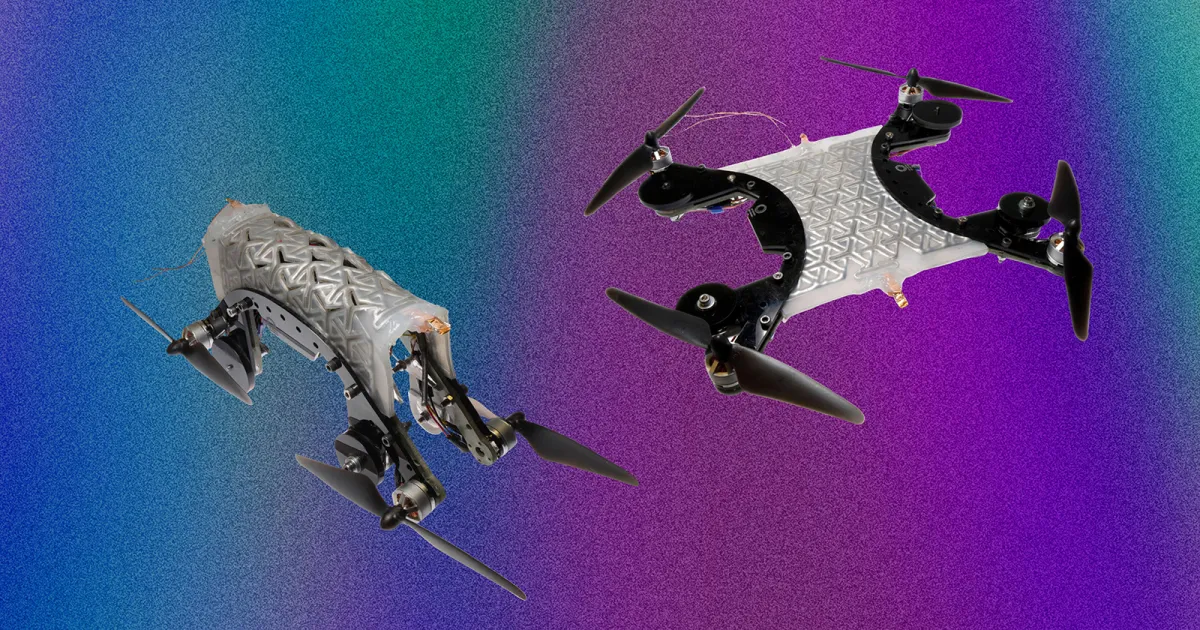AI for Mid-Air Robot Transformations: The Future of Shape-Shifting Robotics
Introduction
Imagine a robot that can change its shape in mid-air—turning from a drone into a wheeled vehicle, or from a flying quadcopter into a crawling snake-like robot. This isn’t just science fiction anymore. With the integration of artificial intelligence (AI) and advanced robotics, mid-air robot transformations are becoming a reality.
From military applications and disaster response to space exploration and delivery services, AI-driven shape-shifting robots are poised to revolutionize mobility and adaptability.
In this blog, we’ll explore:
-
What mid-air robot transformations are
-
How AI makes them possible
-
Key research and breakthroughs
-
Real-world applications
-
Future challenges and opportunities
What Are Mid-Air Robot Transformations?
Mid-air robot transformations refer to the ability of robots—especially aerial robots like drones—to reconfigure their body structure while flying. Unlike traditional machines with fixed forms, these robots can adapt their shape, function, and movement mode based on environmental needs.
For example:
-
A drone can split into smaller units mid-air for surveillance.
-
A flying robot can transform into a ground rover when landing in difficult terrain.
-
A search-and-rescue bot can switch from a quadcopter to a snake robot to enter collapsed buildings.
This dynamic adaptability requires real-time decision-making, precision control, and predictive intelligence, which is where AI plays a central role.

The Role of AI in Mid-Air Robot Transformations
AI is the brain behind these transformations. Without AI, such real-time adaptations would be impossible. Here’s how it helps:
1. Control and Stability
-
AI algorithms use reinforcement learning and neural networks to stabilize robots during transformations.
-
Even as weight shifts and aerodynamics change, AI ensures smooth flight without crashes.
2. Perception and Sensing
-
Using computer vision and onboard sensors, AI allows robots to “see” their environment.
-
It decides when to transform based on terrain, obstacles, or mission needs.
3. Autonomous Decision-Making
-
AI agents calculate the optimal transformation (e.g., switching to wheels vs. wings) in milliseconds.
-
This adaptability makes them useful in unpredictable conditions like battlefields or disaster zones.
4. Coordination of Modular Robots
-
AI enables swarm intelligence, allowing multiple robots to merge, separate, or reconfigure mid-air.
-
Example: a fleet of drones combining into one large robot for heavy lifting.

Key Research and Breakthroughs
Several research labs and companies are experimenting with AI-driven mid-air transformations:
-
ETH Zurich’s Robotic Systems Lab: Developed reconfigurable flying robots that can switch between quadcopter and biplane modes.
-
MIT CSAIL: Working on modular robots that can detach and reassemble in air.
-
NASA: Exploring shape-shifting aerial robots for planetary exploration (e.g., Titan or Mars missions).
-
University of Tokyo: Testing swarm robots that self-assemble mid-air using AI-controlled magnetic coupling.
Real-World Applications
Mid-air robot transformations aren’t just futuristic experiments—they have massive potential across industries:
1. Search and Rescue
-
Transforming drones can fly over collapsed areas, then morph into crawling bots to enter small gaps.
2. Military and Defense
-
AI-powered drones can split into multiple surveillance units mid-air, then reassemble for transport.
3. Delivery and Logistics
-
A flying delivery drone could morph into a ground rover to safely drop off packages.
4. Space Exploration
-
Transforming robots could adapt to alien terrains, switching from aerial exploration to surface mobility.
5. Entertainment and Robotics Shows
-
In robotics competitions, AI-driven transformers could create visually stunning displays of agility and adaptability.
Challenges in AI-Powered Mid-Air Transformations
Despite exciting progress, challenges remain:
-
Energy efficiency: Transformations consume high amounts of power.
-
Safety: Stability during shape-shift must be foolproof to prevent crashes.
-
Miniaturization: Making transformation mechanisms lightweight yet durable.
-
AI robustness: Ensuring AI can handle unexpected conditions without errors.
-
Regulations: Airspace rules for transforming aerial robots are still undefined.

The Future of Shape-Shifting Robotics
The next decade will likely see breakthroughs in:
-
Bio-inspired robotics: Mimicking birds, bats, or insects for natural transformations.
-
Swarm AI: Coordinated transformations among multiple robots.
-
Adaptive materials: Smart materials that change shape automatically under AI control.
-
Commercial use: From drone delivery services to robotic construction teams.
In the long run, AI-powered mid-air transformations may redefine how humans think about mobility. Instead of designing separate machines for flying, driving, or crawling, we could have one intelligent robot that does it all.
Conclusion
AI-driven mid-air robot transformations represent the next leap in robotics—machines that are not just mobile, but adaptively shape-shifting in real time. With AI handling control, sensing, and decision-making, these robots could transform industries from search-and-rescue to space exploration.
The road ahead is full of challenges, but the possibilities are extraordinary. We’re entering an era where robots are no longer fixed in form—they’re dynamic, intelligent, and endlessly adaptable.



